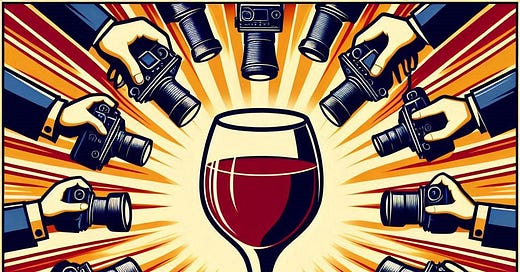Massive Media Coverage of Wine is Rare but Extremely Consequential
Massive coverage has just happened again and there are going to be consequences
In the past 50 years, only three times have events occurred that significantly changed the trajectory of wine sales in the United States. In each of these three cases, the pattern was the same: 1) Event occurs, 2) Media coverage of the event is significant, and 3) Wine sales surge. What’s important to understand here is that each of the three surges in wine sales was preceded by massive media coverage of the event.
It’s important to appreciate just how rare are the occasions when massive media coverage of a wine-related event occurs, each time interpreted by the media and the public as positive. Now, for the first time in memory, a wine-related event has received massive media coverage that has been universally interpreted by both the media and the public as negative.
It begs the question: Will this negative-perceived event result in a downward surge in wine sales, just as the three previous positively-perceived events led to an upward surge?
First, let’s look at the history.
Wine is rarely the subject of widespread media coverage. What I mean by this is that a single story centering around wine almost never makes its way into the headlines of the major media in a way that Americans cannot avoid confronting the story.
In fact, such an instance is relatively rare for any product. Breakthrough stories that are covered en masse by national and local media tend to result from natural and unnatural disasters (LA Fires, 9/11), political events of national significance (January 6th Riots, wars), tragedies that result in multiple deaths (School Shootings, Oklahoma bombing), sporting events that crossover into cultural events (Super Bowls, Olympics), and celebrity misdeeds (Monica Lewinski/Clinton Affair, Harvey Weinstein).
It’s exceedingly rare for an event centering around a “product” to receive widespread media coverage to the point that sales of that product are impacted. The case of Ford’s exploding Pinto led to a 50% drop in sales of the car. The Tylenol/Cyanide scare in the 1980s is an example that led to a massive drop in Tylenol sales. The Bud Light/Transgender controversy in 2023/24. and the resulting boycott resulted in plunging sales of the beer.
But the few times we have seen massive media coverage of wine, this has been followed by a sales surge. Consider the following three instances
1. The Judgment of Paris
Who could predict that George Tabor’s coverage in Time Magazine in 1976 of a few French wine drinkers comparing American wines to French wines would lead to a sharp increase in the sales of American wine? The coverage of the tasting expanded beyond Time Magazine to the New York Times and then to other publications. The implication of American wines outperforming French wines, particularly in the year of the American Bicentennial, was that American wines could and should compete with the most famous and celebrated wines in the world. The results of the “judgment” gave wine drinkers confidence to buy and serve American wines. It was the event that launched American wine into the consciousness of Americans and to higher sales.
2. The French Paradox
In 1991, a segment aired on the popular and trusted “60 Minutes” program that claimed the reason the French could eat a diet higher in fats than Americans was because part of that diet consisted of red wine that, it was explained, possessed properties that aided in cardiovascular health. The message was clear: drinking red wine is good for your health. This revelation and the message that people could decrease their chance of heart disease by drinking red wine was catnip to the media, which covered this story relentlessly. The result was that in 1992 sales of red wine increased in the United States by 39% over 1991.
3. Sideways—The Movie and Pinot Noir
The film “Sideways”, depicting the angst-ridden life of a wine lover/snob, got good reviews when it was released in 2004. But after it was one of five films nominated for Best Film at the 2005 Oscars and eventually won Best Adapted Screenplay at the 2005 ceremony, millions more people were exposed to the Pinot Noir-loving protagonist and the wine itself. It was a cultural phenomenon that the media was excited to cover and did in excessive amounts. While some attributed a subsequent decline in the sale of Merlot to the film’s derogatory treatment of the varietal, it was actually Pinot Noir sales that truly benefited from this cultural phenomenon. In the following three years after the Oscar win for Sideways, Pinot Noir sales soared by 16%.
These are the only three instances of significant media coverage of a wine-related event in the past 50 years. And with each, wine sales surged. Now we have the fourth example of massive media coverage of a wine-related event: The U.S. Surgeon General advising that wine and other alcohol cause cancer. The difference is that, unlike the Judgement of Paris, the French Paradox, and the Sideways phenomenon, this event is seen as negative rather than positive by the media and the public.
So, what’s next?




